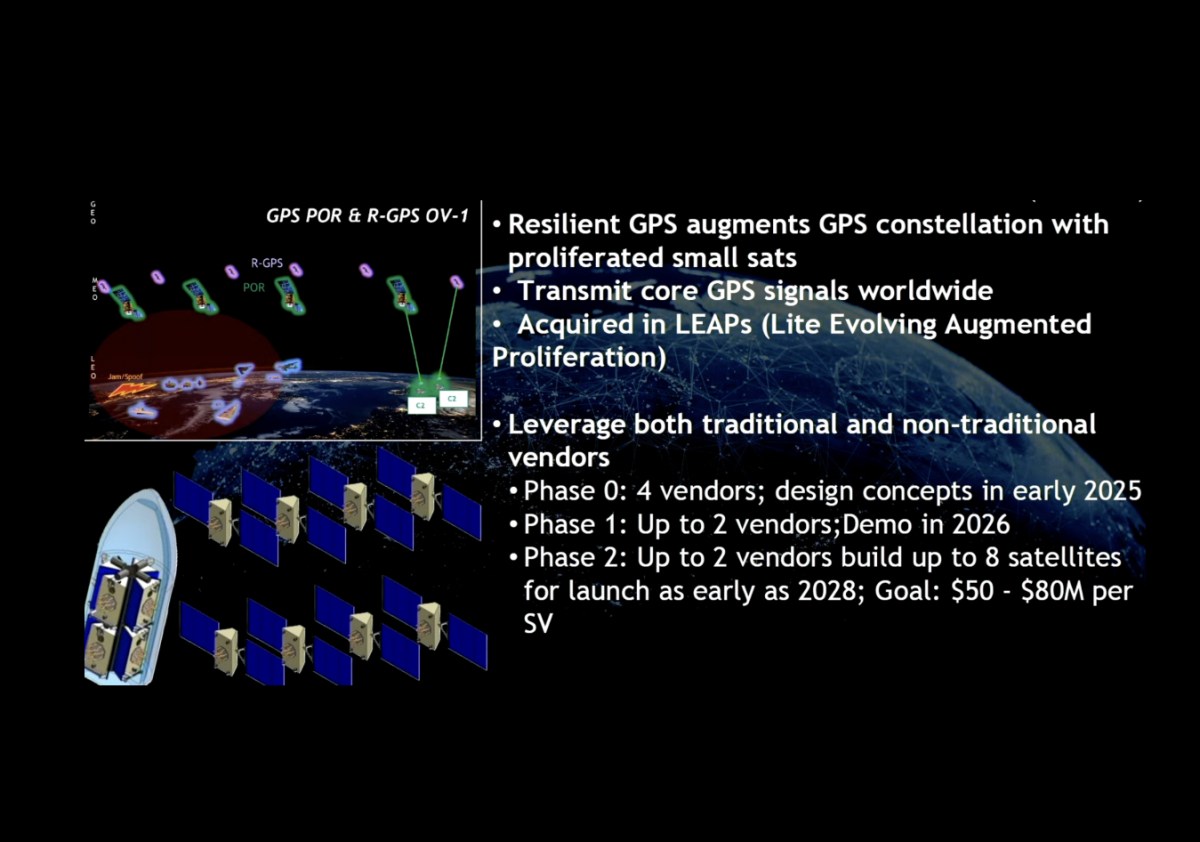WASHINGTON — A navigation satellite designed by Sierra Space for the U.S. Space Force has cleared an early review, the company announced Jan. 16,
Sierra Space, based in Colorado, is one of four companies selected for the Resilient Global Positioning System (R-GPS) program, aimed at bolstering the existing GPS satellite constellation with a fleet of smaller and more affordable satellites. The other competitors are Astranis, Axient and L3Harris.
The Space Force plans to select up to two companies in 2026 to produce eight satellites, scheduled for launch by 2028. These satellites will augment the 31-satellite GPS constellation currently in orbit, with the goal of ensuring global navigation coverage amid concerns about potential threats to space assets from rival nations.
Sierra Space said its R-GPS design successfully passed a “system requirements review” that determines if a satellite’s technical and operational specifications align with the program’s goals. Erik Daehler, vice president of defense, satellites, and spacecraft systems at Sierra Space, said passing this milestone gives the company confidence as the program moves forward.
“We look forward to the next phase of our R-GPS program and getting our satellite technology into orbit,” Daehler said.
The R-GPS program was launched under an expedited “Quick Start” authority granted by Congress, which allows the Department of Defense to fast-track high-priority initiatives. Spearheaded by outgoing Air Force Secretary Frank Kendall, the program aims to deploy smaller satellites with fewer payloads to supplement the traditional GPS satellites built by Lockheed Martin, which carry a $500 million price tag.
R-GPS satellites are expected to cost between $50 million and $80 million each. The program could eventually expand to a total of 24 satellites.
Sierra Space is seeking to ramp up its military satellite business. Beyond its R-GPS involvement, the company is fulfilling a contract for missile-tracking satellites as part of the Space Development Agency’s Tranche 2 Tracking Layer.
The company has invested in a 60,000-square-foot production facility designed to support high-volume satellite manufacturing.
